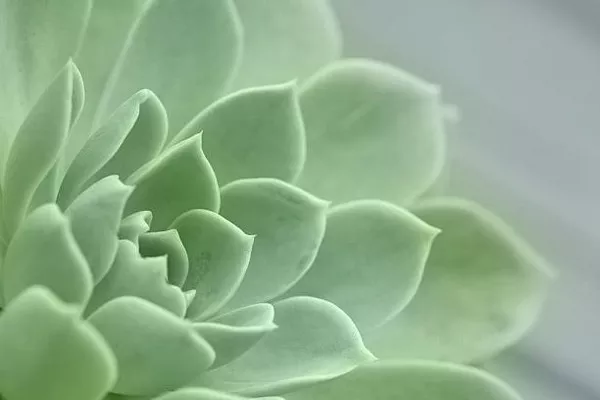Succulents, with their stunning array of shapes and colors, have captivated plant enthusiasts worldwide. However, as these hardy plants grow, some may become too tall and leggy, losing their compact and attractive appearance. When a succulent becomes too tall, it is a clear sign that it needs attention to promote healthy growth and maintain its beauty. In this comprehensive guide, we will explore the process of replanting an overgrown succulent, and ensure the plant’s vitality and longevity.
1. Understanding the Causes of Overgrown Succulents
Overgrown succulents typically result from suboptimal growing conditions, which encourage elongated stems and weak growth. Common causes of succulents becoming too tall include:
Insufficient Light: Succulents thrive in bright, indirect sunlight. Lack of adequate light can cause them to stretch towards the nearest light source, leading to leggy growth.
Overwatering: Overwatering can cause root rot and lead to weak, elongated stems. Succulents are adapted to store water in their leaves, making them susceptible to root issues when exposed to excessive moisture.
Limited Space: When succulents outgrow their containers, they may become top-heavy and stretch in search of more space and resources.
2. Identifying the Need for Replanting
Before you begin the replanting process, consider the following signs that your succulent requires attention:
Leggy Growth: If your succulent has a stretched-out appearance with elongated stems, it is a clear indication that it needs to be replanted.
Leaning or Top-Heavy: An overgrown succulent may lean to one side or become top-heavy, making it unstable in its current pot.
Roots Outgrowing the Pot: If the roots are visibly outgrowing the pot’s drainage holes or becoming root-bound, it’s time to consider repotting.
3. Essential Supplies for Replanting
Gather the necessary supplies before you embark on the replanting process:
New Pot: Choose a pot that is slightly larger and deeper than the current one to accommodate the succulent’s root system.
Potting Mix: Use a well-draining succulent or cactus potting mix, or create a mix by combining regular potting soil with perlite or coarse sand.
Trowel or Spoon: A small gardening trowel or spoon will be useful in carefully removing the succulent from its current container.
Gloves: Wear gardening gloves to protect your hands, especially if your succulent has spines or sharp edges.
4. Step-by-Step Guide to Replanting an Overgrown Succulent
Prepare the New Pot: Add a layer of fresh potting mix at the bottom of the new, larger pot. Ensure the pot has proper drainage holes to prevent waterlogging.
Remove the Succulent: Gently turn the old pot upside down, supporting the plant with your hand. Tap the bottom of the pot to loosen the root ball and slide the succulent out.
Inspect the Roots: Carefully examine the roots for any signs of rot or damage. Trim off any dead or unhealthy roots with clean, sharp scissors or pruning shears.
Position the Succulent: Place the succulent in the center of the new pot, making sure it sits at the same depth as it did in the previous pot. The base of the stem should be just above the soil surface.
Fill in with Potting Mix: Carefully fill the gaps around the succulent with fresh potting mix, ensuring there are no air pockets.
Settling In: Gently press down the soil around the base of the succulent to help it settle into its new home.
Water Sparingly: Wait a few days before watering the newly replanted succulent to allow any damaged roots to heal. When you water, do so sparingly to avoid overwatering.
5. Promoting Healthy Growth in Replanted Succulents
Sunlight Requirements: Place the replanted succulent in an area that receives bright, indirect sunlight. Gradually introduce it to direct sunlight to prevent sunburn.
Watering Schedule: Succulents prefer infrequent, deep watering. Water the plant only when the top inch of the soil is dry to avoid overwatering.
Staking: If the succulent is top-heavy or has weak stems, consider staking it to provide support until it regains its strength.
Pruning: Regularly trim leggy growth to encourage a bushier, more compact shape. Use clean pruning shears to make precise cuts.
Fertilization: Apply a balanced, diluted liquid fertilizer formulated for succulents during the active growing season. Follow the manufacturer’s instructions for application.
6. Propagation for Continuous Growth
As part of your succulent care routine, consider propagation to grow new plants from healthy cuttings. This process not only allows you to rejuvenate the mother plant but also creates opportunities for expanding your succulent collection.
Conclusion
Replanting an overgrown succulent is a rewarding endeavor that restores the plant’s health and appearance. By understanding the causes of overgrowth and the signs that a succulent needs attention, you can take timely action to promote its well-being. Following the step-by-step guide, along with essential tips for healthy growth, will ensure your replanted succulent thrives and continues to bring joy and beauty to your living spaces. By caring for your succulents with diligence and love, you can enjoy their stunning presence for years to come.


